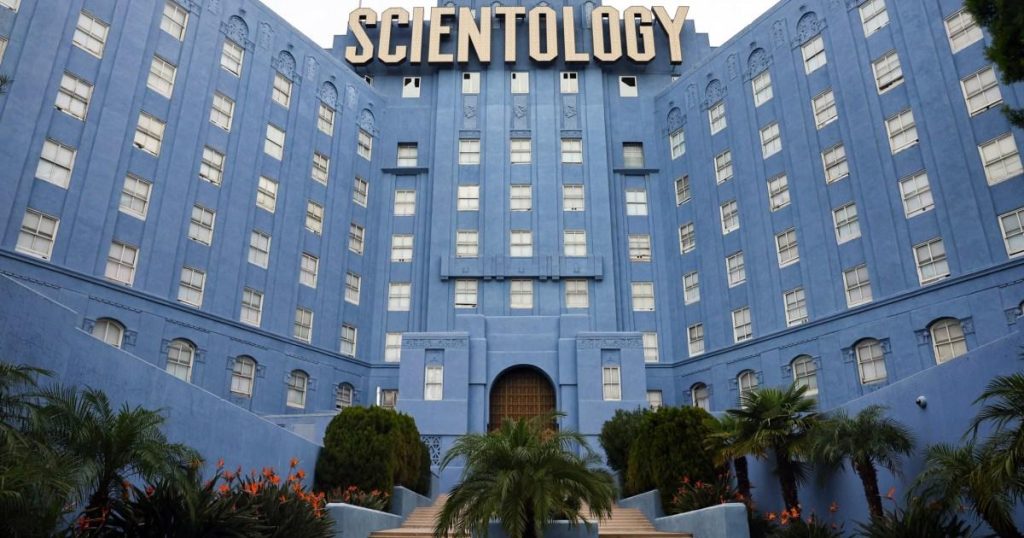The appearance of a Scientology advertisement on the London Underground has ignited a firestorm of controversy, sparking outrage and disbelief among commuters. The poster, featuring a cinematographer named Robert alongside the declaration “I’m a Scientologist,” directs curious onlookers to the organization’s website. This promotional effort comes as a stark contrast to Transport for London’s (TfL) 2019 ban on junk food advertising, implemented to combat childhood obesity, raising questions about the juxtaposition of these seemingly disparate policies. Critics have pointed to Scientology’s controversial history, including allegations of cult-like practices, questionable financial dealings, and even accusations of abuse, as grounds for questioning the advertisement’s approval. While TfL maintains that the advert complies with its advertising policy, which prohibits content likely to cause widespread offense, the public outcry suggests a disconnect between policy and public perception.
Scientology, founded in the 1950s by L. Ron Hubbard, defines itself as a religion centered around the practice of “auditing.” This process involves questioning individuals while using a device to measure electrical flow in the body, purportedly revealing areas of spiritual distress. However, the organization has been plagued by decades of misconduct allegations, including accusations against its leader, David Miscavige, ranging from human trafficking to forced labor. A 2022 lawsuit filed by former members alleges they were trafficked into Scientology as children and subjected to exploitative working conditions as adults, claims the Church vehemently denies, attributing them to harassment and extortion attempts. The case highlights the deep-seated controversies that continue to dog the organization, fueling skepticism and concern surrounding its public image and recruitment efforts.
The advertisement’s presence on the London Underground underscores the ongoing debate surrounding Scientology’s status and practices. Despite the organization achieving recognized religious status in the UK in 2013, its controversial history and ongoing legal battles continue to cast a long shadow. The stark contrast between TfL’s ban on junk food advertising, aimed at protecting children’s health, and the approval of a Scientology advertisement, raises questions about the criteria employed in evaluating potentially harmful content. Critics argue that promoting an organization with such a contested background in a public space frequented by vulnerable individuals, including children, is irresponsible and potentially damaging.
The public outcry over the Scientology advertisement reflects a broader societal concern regarding the regulation of potentially harmful ideologies and practices. While freedom of speech and religion are fundamental principles, the line between acceptable expression and the promotion of potentially damaging beliefs remains a subject of ongoing debate. The juxtaposition of the Scientology advert with the absence of junk food advertising highlights the complexities of balancing public health and safety with individual liberties. The controversy also underscores the need for greater transparency and accountability in the evaluation and approval of public advertisements, particularly those promoting organizations with controversial histories.
The Scientology advertisement’s appearance on the London Underground serves as a stark reminder of the organization’s ongoing efforts to gain public acceptance and legitimacy. Despite the controversies that continue to swirl around the Church, its persistence in promoting itself through public advertising suggests a determination to reshape its public image. The advertisement’s strategic placement in a highly visible public space like the London Underground aims to normalize the organization’s presence and attract new members, particularly among a younger demographic. However, the public backlash demonstrates that Scientology’s controversial past continues to be a significant obstacle in its quest for mainstream acceptance.
The incident also raises broader questions about the role of public spaces in promoting or restricting certain messages. While the London Underground serves as a vital transportation hub, it also functions as a public forum where a wide range of viewpoints and ideologies are exposed to a diverse audience. The decision to allow the Scientology advertisement while simultaneously banning junk food advertising highlights the challenges of navigating the complexities of free speech and public safety. The ongoing debate surrounding the advertisement underscores the need for a more nuanced and transparent approach to regulating public advertising, ensuring that it serves the public interest while respecting individual freedoms.




